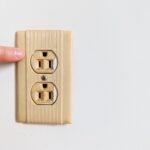As a vital component of your water purification arsenal, the efficient operation of a UV water treatment system is non-negotiable. But when the system unexpectedly falters, compromising water safety, it can be a cause for concern. Understanding why your UV water treatment isn’t functioning, particularly due to lamp issues, is crucial for maintaining the purity and safety of your water supply.
- Delve into the mechanics of UV water treatment systems and identify common reasons behind system failures.
- Recognize signs of a failing UV lamp, such as reduced water clarity, and learn initial troubleshooting steps.
- Follow a comprehensive guide on testing UV lamps, ensuring your water treatment system’s reliable performance.
By mastering these insights, you’ll become adept at diagnosing and resolving UV lamp issues, ensuring your system operates smoothly and your water remains safe. Dive into the article for a deeper understanding and practical solutions to keep your UV water treatment system in top condition.
Understanding UV Water Treatment Systems: Why Is My UV Water Treatment System Not Working? Lamp Testing Guide
UV water treatment systems are pivotal in ensuring the safe consumption of water by utilizing ultraviolet light to eliminate harmful microorganisms. These systems operate by passing water through a chamber where it is exposed to UV light, effectively neutralizing pathogens.
However, like any sophisticated equipment, they can encounter technical difficulties. Among the most common reasons for system failure is the malfunction of the UV lamp.
The UV lamp plays a critical role in maintaining the system’s effectiveness. It is responsible for generating the UV light needed to purify the water. When the lamp doesn’t function correctly, the entire system’s ability to ensure water safety is compromised.
Typical causes of UV water treatment system failures include electrical shorts, poor maintenance, or simply an expired UV lamp that needs replacement. Understanding these factors is crucial for effective troubleshooting and to maintain continuous, efficient operation of your water purification system.
Signs of a Failing UV Lamp and Initial Troubleshooting
One of the first indicators of a failing UV lamp is decreased water clarity, which may suggest that the purification process is compromised. You might also encounter unusual system alerts triggered by safety mechanisms designed to notify you of such failures.
To assess the condition of the UV lamp, begin with a visual inspection for obvious damage such as cracks. Additionally, ensure the power supply is consistent and check if the lamp has gone beyond its operational lifespan.
Further initial troubleshooting steps include examining the quartz sleeve for residue build-up and ensuring that all electrical connections are secure. These basic steps can help identify whether the problem lies in the lamp itself or elsewhere in the system.
Troubleshooting Techniques: Why Is My UV Water Treatment System Not Working? Lamp Testing Guide
A malfunctioning UV water treatment system can pose significant challenges. A common culprit is often the UV lamp, which is crucial for effective water purification. To ensure your system is working efficiently, follow this detailed guide on testing UV lamps.
Safety Precautions: Before you begin, ensure your safety by wearing protective gloves and eyewear. UV lamps emit strong ultraviolet light, which can be harmful to your eyes and skin. Always disconnect the power supply to the UV unit before opening it.
Tools Needed: Gather the necessary tools to carry out the lamp testing. These include a multimeter for electrical testing, a screwdriver set for opening the unit, and a UV light meter if available, to measure the light output.
Step-by-Step Instructions:
- Step 1: Start by disconnecting the UV system from its power source to prevent electrical hazards.
- Step 2: Carefully remove the UV lamp from its housing. Inspect it visually for any signs of damage, such as cracks or discoloration.
- Step 3: Use a multimeter to test the electrical continuity of the lamp. Set the multimeter to the resistance setting and place the probes on both ends of the lamp. A reading that shows continuity often indicates that the lamp is functional.
- Step 4: If available, use a UV light meter to measure the intensity of the lamp’s output. Compare this with the manufacturer’s specifications to determine effectiveness.
- Step 5: Reinstall the lamp securely in its housing and reconnect the power supply. Perform a check to see if the system operates as expected.
These troubleshooting techniques are designed to diagnose UV lamp issues effectively. By following these guidelines, you can maintain optimal functioning of your UV water treatment system. Regular checks and maintenance ensure the safety and purity of your water supply, keeping it free from harmful microorganisms.
Frequently Asked Questions
What is the primary function of a UV water treatment system?
A UV water treatment system uses ultraviolet light to disinfect and purify water, effectively eliminating harmful microorganisms.
How do you know if a UV lamp needs replacing?
Signs include reduced water clarity, system alerts, or when the lamp exceeds its service life, typically around 9,000 hours.
What could cause a UV water treatment system to stop working?
Common causes are UV lamp failure, power supply issues, or dirty quartz sleeves hindering light transmission.
Is it safe to handle UV lamps during maintenance?
Always follow safety precautions such as wearing gloves and goggles, and ensure the system is off before maintenance.
Can I test a UV lamp myself, or should I call a professional?
While basic tests can be done at home, it’s recommended to consult a professional for complex diagnostics to ensure safety and accuracy.
How often should I perform maintenance checks on my UV system?
Routine checks should be conducted at least every 12 months or as specified by the manufacturer to maintain efficiency.





